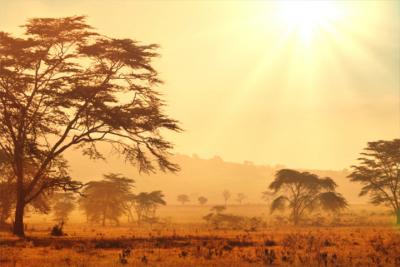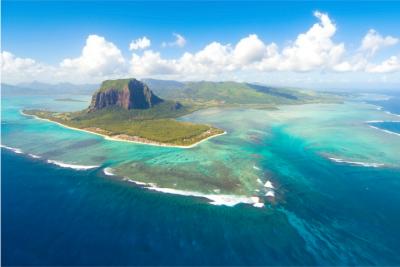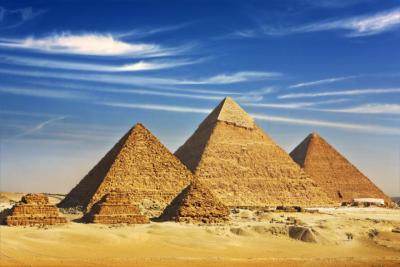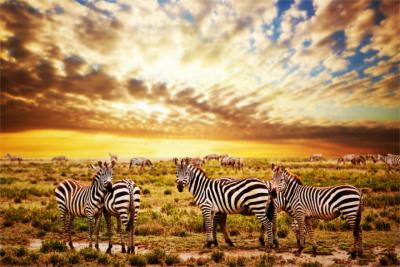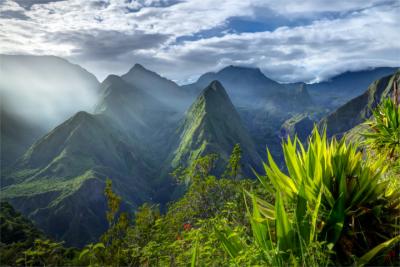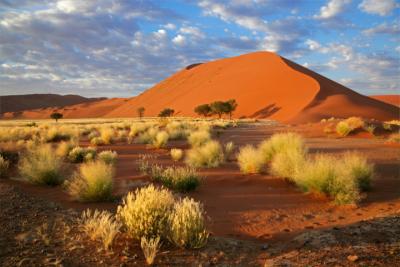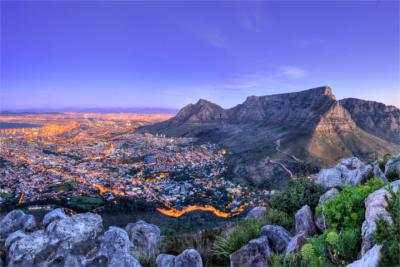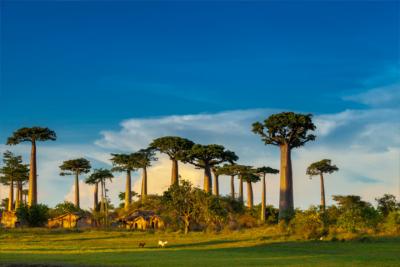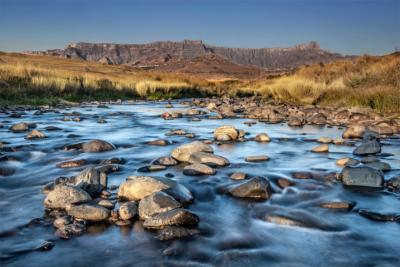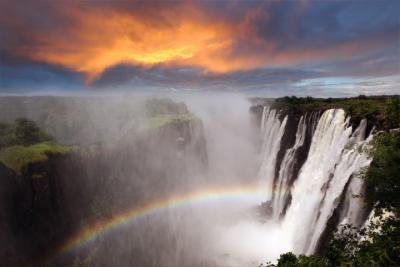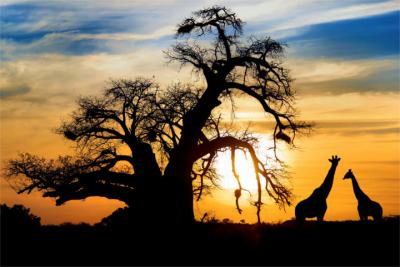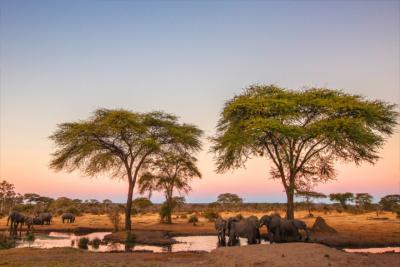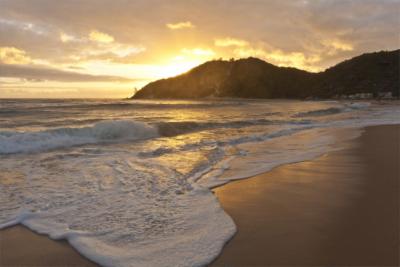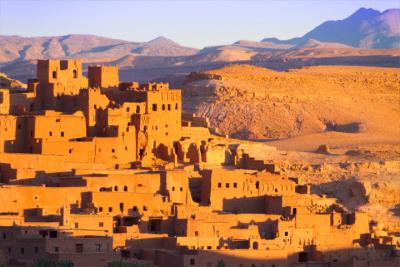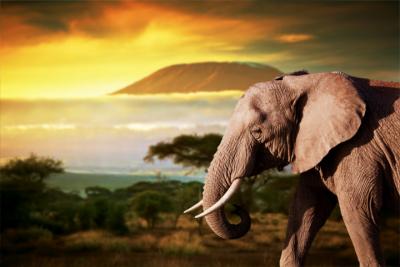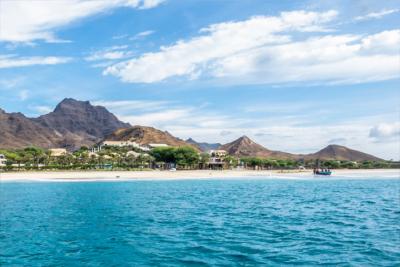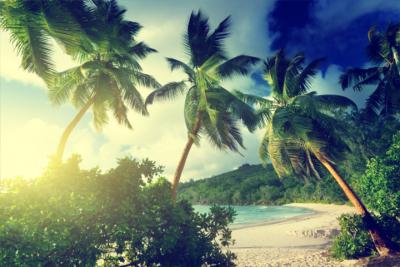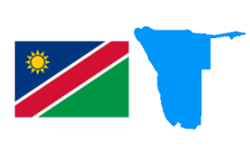Travel Offers
Travelmyne Featureprint
Distance
Namibia – Endless Deserts and Exotic Animals
Endlessly vast deserts consisting of red sand which are sporadically vegetated by shrubs are typical of Namibia. Just like the diversity of the African fauna, which populates the country's fertile regions. Due to its unique landscape and the extraordinary mix of African and German roots, Namibia is an attractive travel destination.
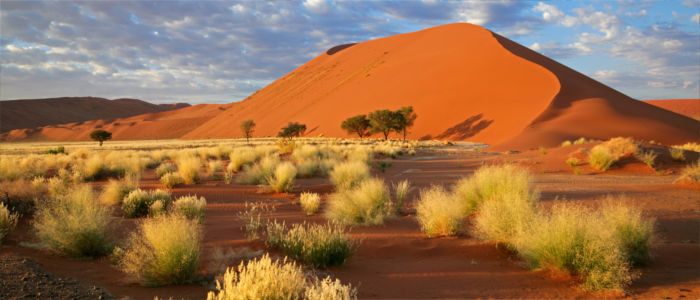
Geography - Namibia's deserts
Namibia is located in southern Africa next to South Africa, Botswana, Sambia and Angola. The country borders on the Atlantic Ocean in the west. The country's east and west are dominated by deserts, while the centre accommodates Namibia's Central Plateau. The climate is hot and dry throughout the year with common temperatures over 30 °C. The temperature differences between day and night are enormous. The winter months July and August can be frosty and there is a lot of rain in the north of the country.

Nature - Unreal landscapes and wild animals
The whole coastal region is characterised by the Namib Desert, which gave the country its name and is populated by wild horses, springboks and antelopes. In the east you find the mighty Kalahari Desert. This plateau is covered in endlessly vast areas of fine, red sand, which are crossed by knobby plants. Many animals adjusted to this inhospitable environment such as lions, elephants, zebras, buffaloes and numerous other great mammals. Between the two desert regions you find mountains and plateaus with the Brandberg Mountain (2,600 m) as the highest point. The Caprivi Strip in the north constitutes Namibia's fertile island with rich rivers and tropical rainforest.

Natural sights - Africa's deepest canyon
You can experience Namib's gigantic dunes and sandy plateaus in the Namib-Naukluft National Park, for example. With heights of about 200 metres, the dunes near Sossusvlei are some of the highest on earth. Besides their height, they display an interesting play of colours, which is created by humidity and sand. Other sights in this park are harsh mountains and the lagoon of Sandwich Habour with its great flocks of flamingos. You can best marvel at Namibia's diverse fauna in the Etosha National Park, Africa's second biggest national park. Its centre contains a gigantic, empty white salt pan. In addition, you see elephants, zebras, giraffes, buffaloes, rhinoceroses and antelopes at the waterholes in the vast grassland and xeric shrublands. With a lot of luck you spot a lion or cheetah. The Fish River Canyon in the south is a truly extraordinary landscape formation and one of Africa's deepest canyons. The azure blue Fish River has made its way 550 metres deep into the harsh, brown rocks. This rugged environment is home to antelopes and leopards.

Culture - From the German colony to the independent state
Namibia presents a colourful mix of many peoples. These mainly immigrated to the territory between the 16th and 18th century. In the 19th century, the country became a German colony. After the First World War, Namibia came under control of the administration of the so-called Union of South Africa. The country only gained independence in 1990. The majority of the population still lives on livestock farming and agriculture. Music and dance are important elements of culture and are part of the ritual ceremonies. The customs and habits which developed during colonial times live on - like the German language - but bit by bit Namibia turns to modernity. Moreover, the inhabitants gradually develop self-confidence because they start to feel that they live together in an independent state.

Cultural sights - Capital Windhoek as the cultural centre
Windhoek is a peaceful capital. The number of modern buildings is increasing but there are still many beautiful historical buildings. On the Independence Avenue, the central shopping street, you can go shopping and strolling. Near the centre on a hill you find the three neat castles Heinitzburg, Schwerinsburg and Sanderburg. The Christ Church, the equestrian statue and the Tintenpalast are reminiscent of the European occupation. North-west of Windhoek lies the region Twyfelfontein, which accommodates mysterious age-old rock paintings and a fossilised forest as relics of bygone times. Visitors may suffer from shudders at the so-called Skeleton Coast. Numerous shipwrecks, which ran aground in the fog, rest on the seabed.

Experience - Exotic food and cultural dances
Traditional Namibian dishes are maize porridge with sauce but also exotic dishes like grilled caterpillars or warthog skin. In addition, you can see the colonial influence in the Namibian cuisine: they have many German pastries and dishes. Namibia is a country of craftspeople. Especially on the lively street markets, you can buy artistically decorated ostrich eggs, sets of cutlery, lamps or mirrors. As the country of diamonds Namibia also offers many semi-precious stones and minerals. Visitors who want to experience Namibia's wonderful nature should take a tour with a catamaran or plane. You can best get to know the country's rich culture with its wild music, sweeping dances and impressive arm and leg jewellery at the people's celebrations. City guides, for example in Windhoek, offer special tours, on which they show visitors their own borough – the simple, colourful houses; women who sew traditional dresses; or a salon, in which hairdressers work on elaborate cornrows for hours.

Activities - Out and about in the desert landscape
The harsh, extreme desert landscape with its exotic fauna makes Namibia an excellent destination for safaris. Horse riding, Jeep or motorcycling tours are also possible. Another option are hiking tours through the vast, deserted area. Windhoek offers great conditions for surfing. An activity with a high fun factor is sandboarding, where you zoom down the desert dunes. Canoeing tours on the rivers which permanently carry water or in Walvis Bay, where you are accompanied by curious dolphins and seals, are real adventures.

Information
Windhoek (WDH) and the seaport town Walvis Bay (WVB) are connected to international air traffic. In addition, many cities and farms have airfields which are used for tourist trips. You reach most parts of the country via streets but these are often not coated with asphalt. Trains run between several cities with the "Desert Express" between Windhoek and Swakopmund as the most famous route. The official language is English.
Namibia is a first rate travel destination for holidaymakers who want to get to know the characteristic African environment full of deserts and exotic animals. But the country is also a worthwhile destination for visitors who are interested in its special culture with African and German roots.

